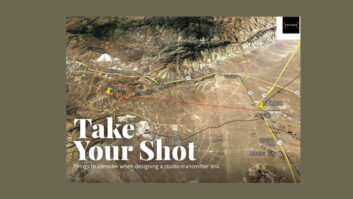
Joan Warner is CEO, Commercial Radio Australia and chairperson of the WorldDMB Asia Pacific Committee. SYDNEY, Australia — A highly competitive media landscape means radio, like all other media, must fight hard to keep increasing its audience and attract advertising revenue. Fortunately one of radio’s strength’s is to effectively respond to change.
The radio industry has continued to thrive when presented with the challenge of competition from TV, Internet, Ipods, podcasts, mobile phones and apps. Radio broadcasters have adapted to change. They have looked at the technology that has threatened their existence and, in many cases, cleverly integrated it into their business models.
Reliance purely on analog only limits radio’s ability to innovate. Online streaming can’t replicate or replace the reach of broadcast radio to large audiences simultaneously. Radio must be available across all platforms — AM, FM, DAB+, online, on mobiles, on tablets, in cars and any other new device that comes to market.
Path forward
Radio broadcasters worldwide have recognized the need to be in the digital space. DAB+ digital radio is powerful, spectrum-efficient and offers broadcasters worldwide the ability to give listeners greater interactivity, more programming, better sound, plus scrolling text and slide show to complement the audio.
In Australia, we had the benefit of learning from a number of digital radio rollouts worldwide, and from experience, there are key elements that can determine a successful implementation of digital radio technology.
These include keeping an analog spectrum; the industry working together, sharing costs; free spectrum and broadcasters holding the spectrum license; no new entrants until market is established; high-powered robust DAB+ signal; new content; affordable receivers in a variety of retail outlets; and effective marketing and communication strategies.
First, from the outset it is important for all of the radio industry — public and private broadcasters — to work together on policy and regulation. One industry voice is much more powerful than a splintered approach when talking to government and regulators.
When developing industry policy, broadcasters must insist on access to spectrum and transmission powers that allow effective broadcast across the whole market and ask for incentives.
One of the key incentives for Australian commercial broadcasters was that each existing commercial analog station was given 128 kbps free as a basic entitlement. If a radio broadcaster had two stations they were given 256 kbps. The only restriction placed on it was to use it or lose it.
Importance of promotion
In addition there should be no format or content restrictions, so that broadcasters are allowed to create and experiment with new innovative content and programming. It is most important for commercial or private broadcasters to be encouraged to invest in and promote digital radio.
One successful way to do this is to not allow any new digital licenses for a period of time. This is to protect the investment, while broadcasters are carrying two costs of broadcasting — analog and digital — and allows time for existing broadcasters to move listeners to digital radio and find new revenue to cover costs. This was a key incentive for Australian commercial broadcasters, but there will be other incentives in other markets that commercial broadcasters may prefer.
Radio broadcasters must be given the first opportunity to own and operate the multiplexes. In Australia, joint venture companies were set up in each state to own and operate the multiplex.
It is also important for broadcasters to understand how new content can drive uptake of digital radio and grow revenue streams.
Working with retailers and manufacturers early in the process cannot be underestimated. This ensures that a wide range of affordable receivers are available and provides a range of options for listeners.
And finally, a carefully planned marketing and awareness campaign is essential. This makes sure listeners know about digital radio and the benefits it offers them — fundamental to winning their support and buy-in.
In Australia, the industry has been very pleased with the uptake of DAB+ digital after just three years and without an AM or FM switch off. We share our experience with others by hosting workshops and study tours, so broadcasters can see the technology first hand.
Looking forward, radio’s challenges will be to continue work on getting DAB+ digital radio into as many devices as possible — not only more vehicles, but also phones and tablets.
Radio is a dynamic and much loved industry that embraces new technology and new challenges and must continue to do what it does best: provide content that is relevant, live, local, immediate and interactive, whether the format is music, entertainment, news, talk or sport.
Joan Warner is chief executive officer, Commercial Radio Australia and chairperson of the WorldDMB Asia Pacific committee.












